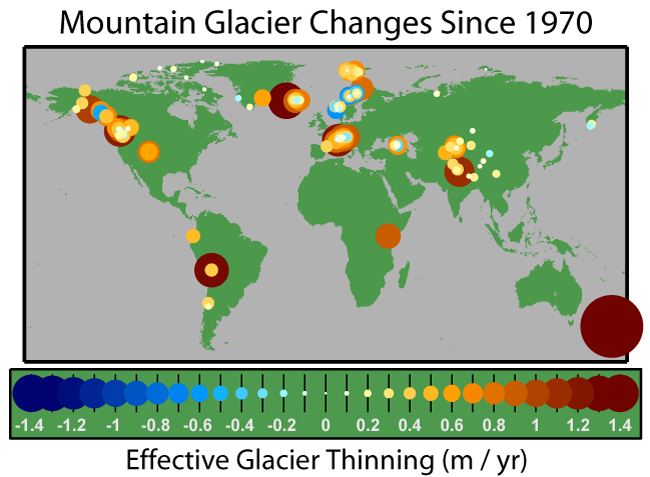Файл:Glacier Mass Balance Map.png
Перейти к навигации
Перейти к поиску
Glacier_Mass_Balance_Map.png (650 × 477 пкс, размер файла: 75 КБ, MIME-тип: image/png)
История файла
Нажмите на дату/время, чтобы посмотреть файл, который был загружен в тот момент.
| Дата/время | Миниатюра | Размеры | Участник | Примечание | |
|---|---|---|---|---|---|
| текущий | 15:56, 2 октября 2016 |  | 650 × 477 (75 КБ) | Cmdrjameson | Compressed with pngout. Reduced by 33kB (30% decrease). |
| 06:48, 10 апреля 2006 |  | 650 × 477 (108 КБ) | Pflatau | == Summary == The effective rate of change in glacier thickness, also known as the glaciological mass balance, is a measure of the average change in a glacier's thickness after correcting for changes in density associated with the compaction o |
Использование файла
Следующие 2 страницы используют этот файл:
Глобальное использование файла
Данный файл используется в следующих вики:
- Использование в ar.wikipedia.org
- Использование в cs.wikipedia.org
- Использование в de.wikipedia.org
- Использование в en.wikipedia.org
- User:Dragons flight/Images
- Holocene glacial retreat
- Glacier mass balance
- Retreat of glaciers since 1850
- Talk:Retreat of glaciers since 1850/Archive 2
- Wikipedia:Reference desk/Archives/Science/2006 September 26
- Portal:Climate change/Selected panorama
- Portal:Climate change/Selected panorama/2
- User:Ctello2/sandbox
- Portal:Climate change
- Использование в es.wikipedia.org
- Использование в eu.wikipedia.org
- Использование в fi.wikipedia.org
- Использование в fr.wikipedia.org
- Использование в gl.wikipedia.org
- Использование в gu.wikipedia.org
- Использование в hi.wikipedia.org
- Использование в hr.wikipedia.org
- Использование в hu.wikipedia.org
- Использование в hy.wikipedia.org
- Использование в id.wikipedia.org
- Использование в it.wikipedia.org
- Использование в ja.wikipedia.org
- Использование в mk.wikipedia.org
- Использование в nl.wikipedia.org
- Использование в pl.wikipedia.org
- Использование в sh.wikipedia.org
- Использование в sr.wikipedia.org
- Использование в sw.wikipedia.org
- Использование в ta.wikipedia.org
- Использование в tt.wikipedia.org
- Использование в vi.wikipedia.org
- Использование в zh.wikipedia.org


